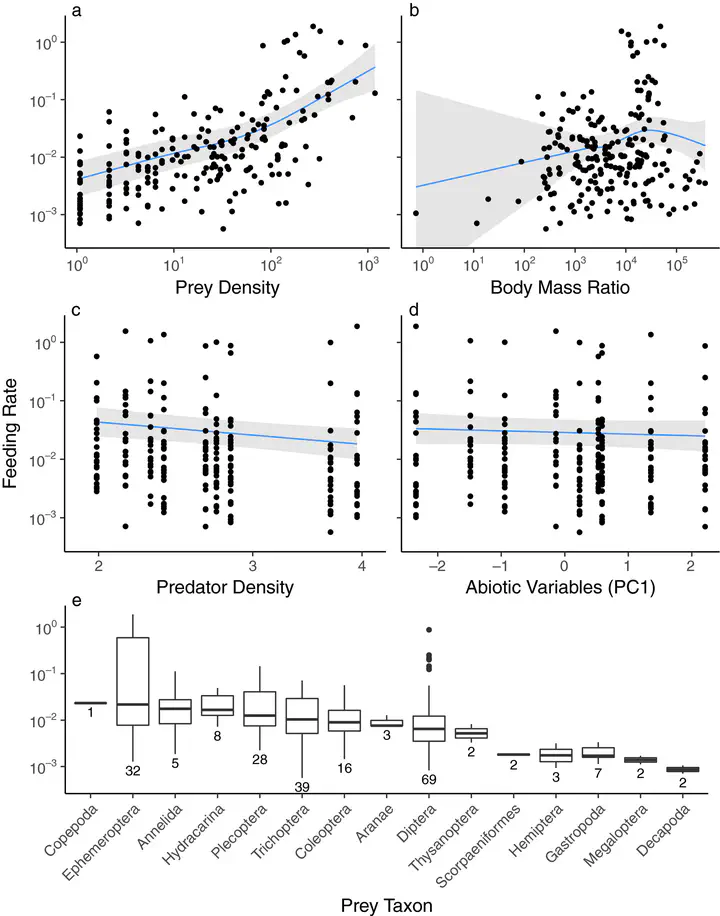What drives interaction strengths in complex food webs? A test with feeding rates of a generalist stream predator

Abstract
Describing the mechanisms that drive variation in species interaction strengths is central to understanding, predicting, and managing community dynamics. Multiple factors have been linked to trophic interaction strength variation, including species densities, species traits, and abiotic factors. Yet most empirical tests of the relative roles of multiple mechanisms that drive variation have been limited to simplified experiments that may diverge from the dynamics of natural food webs. Here, we used a field-based observational approach to quantify the roles of prey density, predator density, predator-prey body-mass ratios, prey identity, and abiotic factors in driving variation in feeding rates of reticulate sculpin (Cottus perplexus). We combined data on over 6,000 predator-prey observations with prey identification time functions to estimate 289 prey-specific feeding rates at nine stream sites in Oregon. Feeding rates on 57 prey types showed an approximately log-normal distribution, with few strong and many weak interactions. Model selection indicated that prey density, followed by prey identity, were the two most important predictors of prey-specific sculpin feeding rates. Feeding rates showed a positive relationship with prey taxon densities that was inconsistent with predator saturation predicted by current functional response models. Feeding rates also exhibited four orders-of-magnitude in variation across prey taxonomic orders, with the lowest feeding rates observed on prey with significant anti-predator defenses. Body-mass ratios were the third most important predictor variable, showing a hump-shaped relationship with the highest feeding rates at intermediate ratios. Sculpin density was negatively correlated with feeding rates, consistent with the presence of intraspecific predator interference. Our results highlight how multiple co-occurring drivers shape trophic interactions in nature and underscore ways in which simplified experiments or reliance on scaling laws alone may lead to biased inferences about the structure and dynamics of species-rich food webs.